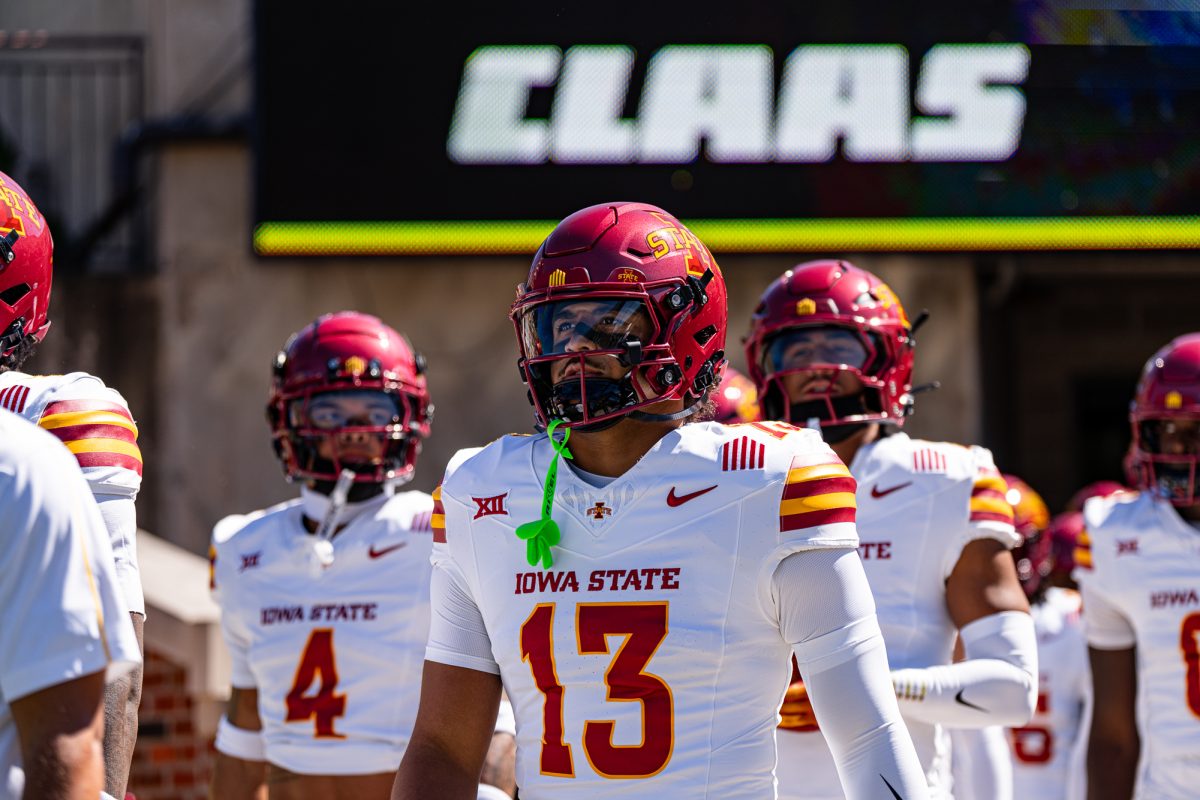Reopen Catt Hall naming talks
September 9, 1997
In response to Timothy Sorensen’s letter to the editor (9/8/97), I re-read Milton McGriff’s letter (9/4/97) which is the subject of Sorensen’s letter.
Mr. Sorensen asserted that Milton’s letter was a personal attack on President Jischke. If Milton had written about President Jischke’s personal hygiene, style of clothes or had he written “Jischke’s mother wears army boots,” it would have been a personal attack.
Some people are so uncomfortable challenging or disagreeing with someone in a position of power, like President Jischke, that they mistakenly perceive any disagreement or challenge as “personal.”
Also, at no point did Milton claim to speak for all Iowa State students (please re-read his letter, if necessary).
The Board of Regents will not approve the renaming of Catt Hall without a recommendation by President Jischke, and President Jischke has said he will not recommend a name change.
Many of Catt’s supporters have publicly acknowledged that she used racist arguments while trying to get the 19th Amendment ratified. Historians have documented the racism of white suffragists, including Catt. However, President Jischke has said that he can’t see the racism in Catt’s writings.
Tim Lane was partially correct that the name of Catt Hall was selected to honor his great-great aunt, Carrie Chapman Catt (Lane’s 9/5/97 letter).
The naming process was a long one, beginning with a small group of persons who supported renaming Old Botany Hall in honor of Catt, another group(s) of campus activists who wanted to save Old Botany from demolition and the official naming committee itself, which approved the renaming of Old Botany to Carrie Chapman Catt Hall.
However, a lot of the early support was drawn by those interested in seeing a campus building named after a woman.
At the naming dedication, President Jischke said “This building is a symbol of Iowa State’s commitment to equality.”
Iowa’s Lt. Governor also spoke of the building’s symbolism and urged women to “accept nothing less than flawless honesty and integrity” from themselves and others (ISU Daily 10/9/95).
The September 29th Movement has never denied Catt’s achievements. The September 29th Movement has never denied that Catt was well-traveled.
However, in Catt’s struggle to see the passage of the 19th Amendment, she used racist arguments. Before and after the ratification of the women’s suffrage amendment, Catt’s writings reflect xenophobia and classism.
And while Catt did devote a great deal of her life to peace, at least one scholar has noted that the National Committee on the Cause and Cure of War (of which Catt was a leader) did not “… try to include women of color, women from the working class or women whose political perspectives differed significantly.
In fact, by defining its membership — almost entirely European American and middle class — as “middle of the road,” it marginalized all other women.” (Linda Schott, “‘Middle of the Road’ Activists: Carrie Chapman Catt and the National Committee on the Cause and Cure of War,” Peace & Change Vol. 21 No. 1, Jan. 1996).
When the publication UHURU! (the Black Student Alliance newsletter) published an article about Catt’s racism, xenophobia, and classism in the fall of 1995, some ISU faculty and administrators reacted by denying that Catt said or wrote the passages, which can be found in Chapter 6 of “Woman Suffrage by Federal Constitutional Amendment” (New York: National Woman Suffrage Publishing Co., 1917).
In fact, the ISU Catt Center for Women and Politics distributes a copy of Chapter 6 (containing Catt’s assurances that woman suffrage will strengthen white supremacy) to which they have typed thereon: “edited by Catt.”
The chapters of this book may have been compiled by Catt, but the book’s table of contents attributes the authorship of Chapter 6 to Catt.
There also exists a stand-alone suffrage pamphlet entitled “Objections to the Federal Amendment,” containing the same text as Chapter 6, and that pamphlet identifies Catt as the author (published by National Woman Suffrage Pub. Co., Inc., [1919]).
President Jischke may have sincerely felt that the naming of Catt Hall was a symbol of equality. However, many of us have since questioned that symbolism. A relatively small number of persons were involved with the naming process of Catt Hall.
Those groups did not include a diverse nor fair representation of students, faculty and staff at ISU.
Also, people closely involved with the naming process may have been affected by their personal bias and/or administrative pressure and therefore, the issues before us now were not researched thoroughly (or at all) before Old Botany was renamed Carrie Chapman Catt Hall.
However, those issues are before us now. If Catt Hall really is a symbol of equality, as President Jischke stated, then reopening the naming process should be done in the name of fairness so that these issues can be addressed appropriately by a diverse and well-informed representation of faculty, students and staff.
Lynn Wellnitz
Secretary
Office of Admissions
Member of September 29th Movement






